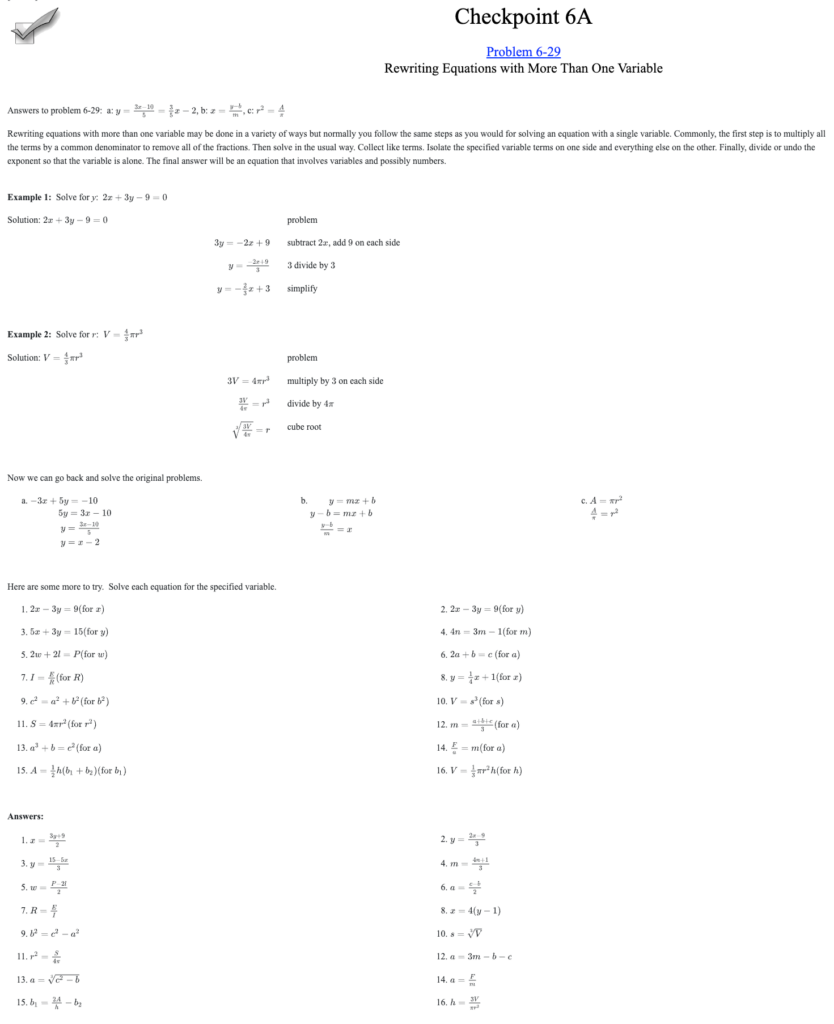February 2024

Mathematics is a story. We do not always take time to think about it in that way, but it is true. We start this story very early in our lives, learning to count on our fingers and toes. With each passing year, we experience more of this fascinating tale. We meet amazing main characters such as numbers, basic operations, shapes, and variables. We encounter exciting settings like algebra, geometry, and precalculus. Along this journey, there are many unexpected twists and turns that add to the intrigue of the story.
- But what happens to a story when we do not let it develop like it should?
- What happens when we meet characters too early (or too late)?
- What happens to the intrigue of the story when the major plot points are revealed before their intended time?
My 8-year-old daughter is all-in for Harry Potter right now. Though a little timid about the material at first, she has been flying through the books faster than I can watch the movies to keep up. She loves recounting the new characters that she meets, rereading the moments that made her laugh, and telling me about how much she hates You Know Who for doing you know what.
After listening to Episode 3.15 of the More Math For More People podcast, where Dr. Leslie Dietiker discusses mathematical storylines, I began to wonder how my daughter’s experience with the Harry Potter series would have changed had I treated it the way I learned math.
First, I should front-load all of the terminology that she was going to read about. I would need to define terms like “Muggle,” “Quidditch,” and “Galleon” so that when she encountered those words, she would already know what they meant. Learning terms naturally as the story progresses may create roadblocks along the way.
Second, since I have the Harry Potter expertise because I have read through the series multiple times, I need to read the book for her. I know exactly what happens, where it happens, and who it happens to. If something happens that is not explained immediately, I can let her know what happens later in the story and how it all connects. By reading the book to her, I can clear up all confusion and take away much of the difficulty the story might bring her.
Lastly, as we progress through the book, I can gradually release her from being dependent on my reading so that she can learn to read the story on her own. After starting the book for her and making sure that the foundation for the story is set, I can let her try reading on her own. But I will be close by if she needs me to jump in and explain something. (However, once we start a new book, I’m going to have to be the one who starts the reading again.)
As I think about this process, it seems rather…silly. Doing these things with my daughter would have completely ruined her enjoyment of reading, and I likely would have been more of a hindrance than a help. So if this method won’t work for reading stories, why do we do these things with math? Why do we feel the need to frontload terms, remove all roadblocks, and only gradually release students to explore mathematics on their own? I have a couple of wonders:
- I wonder if we believe that, by being guided through mathematics, students will be more successful in math. And if students are more successful in math, they will like it more and, in turn, like our classes (and perhaps even us) more.
- I wonder if this way of teaching seems more natural to us because that is how we learned. Many of us were successful in math because we were taught how to be good mimickers, and it got us very far. So if we can get our students to be good mimickers, we believe they will go far in math as well.
- I wonder if we fear sharing mathematical authority in the classroom. Perhaps we don’t think of it in this way, but there is a certain comfort in being the one with the power and control. After all, we have the mathematics expertise and educational training to maintain order and guide learning.
So how can we get to a place where we allow students to experience the amazing story of mathematics?
Stick to the storyline. From personal experience, I know it can feel like students are not getting enough practice or like certain topics are being introduced out of place. However, just as with any captivating story, it is important to remember that the CPM curriculum was designed with intentionality. By following the suggested pacing and moving along in the intended order, the mathematical story will unfold as the CPM authors envisioned.
Encourage students to actively shape their learning journey. Reading stories is a personal journey. The words we read and the situations we encounter affect us in unique ways. These experiences provide a bridge to conversations that allow us to compare with others and have engaging conversations about differing viewpoints. Mathematics is no different. Over the course of the school year, your students will engage with the curriculum in different ways and have diverse experiences. As teachers, we should make space for these different experiences by providing an environment and structure for students to be vocal and active in their learning.
Get comfortable with being uncomfortable. We all have expectations for how students are going to learn, but many times, the reality of a learning journey does not match what we expected. But just because the lesson does not go the way you intended does not mean it was not fruitful. Remember that learning is dynamic. Sometimes it might even feel chaotic. Don’t let your comfortable expectations get in the way of the exciting settings and unexpected twists that come with student learning.
Much like the stories we cherish, the mathematical journey deserves to be experienced authentically. Our tendency to interrupt the story dampens the thrill of student discovery, but trusting CPM’s design, helping students shape their learning journey, and allowing ourselves to experience discomfort can provide an environment where the beauty of mathematics is not just taught but experienced. And if we can create this type of environment, we honor our students as individuals, providing a more authentic and meaningful educational experience for all.

Adam Varnes
adamvarnes@cpm.org


